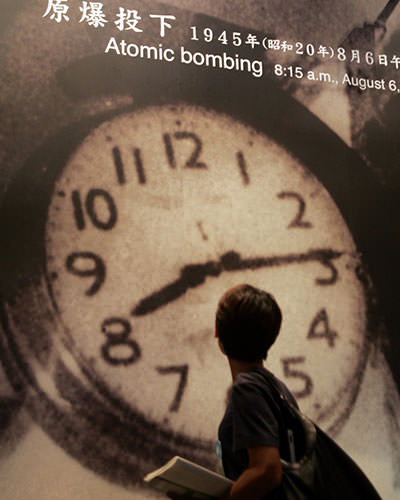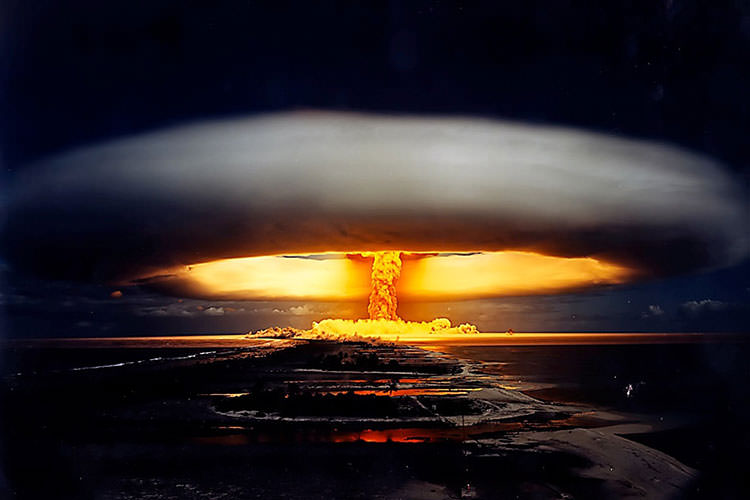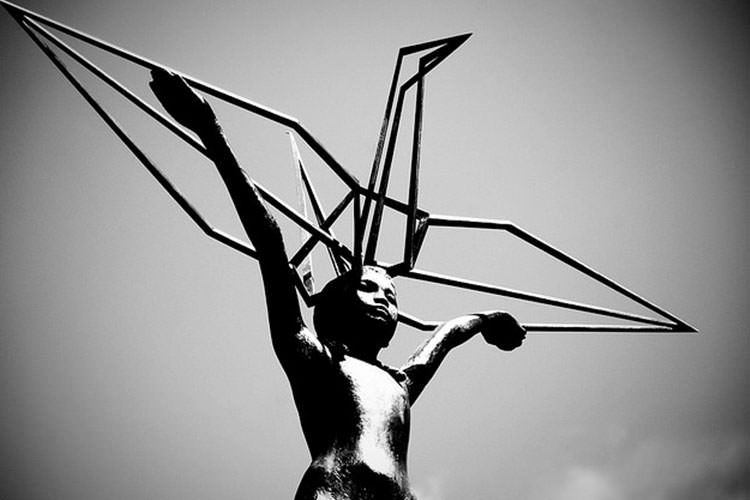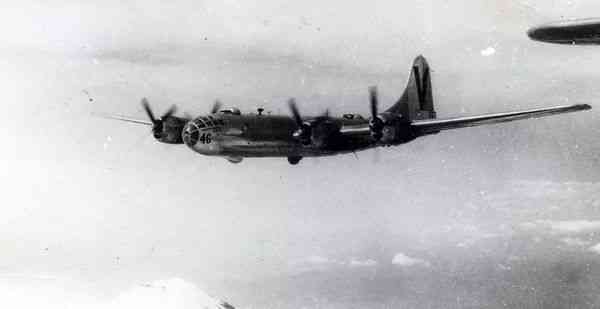On August 6, 1945, a B-29 bomber, nicknamed "Analogi," which had taken off from Tinian Island in the United States , along with two other planes, four body bombs known as "Little Boy," hit the Japanese Hiroshima at the top. Today, the "atomic bomb dome" has been dropped to explode 54 seconds later at a height of 548 meters
The atomic bombings of Hiroshima and Nagasaki were two nuclear operations carried out against the Japanese Empire during World War II by order of then-President Harry Truman. In these two operations, two atomic bombs were dropped on the cities of Hiroshima and Nagasaki three days later, causing extensive destruction and killing of the citizens of these two cities. About 220,000 people died in the two atomic bombings, most of them civilians. More than 100,000 people were killed in the bombing, and the rest died by the end of 1945 from the devastating effects of radioactive radiation.
The bombing of Hiroshima and Nagasaki has been the only use of nuclear weapons in the world to date.

The first operation took place on Monday, August 6, 1945, at 6:15 a.m. local time in Hiroshima. The first atomic bomb, the "Little Boy," was dropped on Hiroshima by an Enola Gay bomber. To make a more destructive effect, the bomb was set to explode 576 meters above the ground. The energy produced by this bomb was equal to the energy of 16,000 tons of tiananite. Atomic interactions at the center of the bomb heated it to several million degrees Celsius. This huge heat melted everything down to a radius of one and a half kilometers from the center of the bomb.
The nuclear attack on Hiroshima was completely unexpected for Japan. The Japanese were unaware that the Americans had obtained the atomic bomb. On the other hand, when Japanese and Ward radars showed only three aircraft in the area, the flights were thought to be reconnaissance because bombing areas was common with a large number of bombers.

People who have seen the explosion of the "little boy" in the sky of Hiroshima from afar say that they have seen another sun in the sky. The bomber struck shortly after noon in front of a crowd of protesters, some of them in the form of sudden air pressure such as a sudden storm (the blast wave), one-third in the form of heat and another six in the form of alpha, beta, gamma and neutron radiation. .
In the area below the center of the blast, temperatures rose to several thousand degrees Celsius. After the blast, a human shadow remained on the steps of the bank building 200 meters from the center of the blast; Someone fell on the stairs and turned to ashes, but the stairs under his body remained intact, but in other parts of the stairs, the outer surface of the rocks had melted! Up to a radius of 500 meters from the center of the explosion, the ceramics of the houses had melted, and up to a radius of two kilometers, the clothes worn by the people had burned.
Two-thirds of Hiroshima's buildings, including steel and industrial plants such as Mitsubishi, were destroyed in the bombing. The only thing left of the city was the building of the Hiroshima Provincial Industrial Promotion Hall, where the explosion took place above the dome of the building and was not completely destroyed due to its location in the center of the explosion.
Two days after the bombing of Hiroshima and against the will of the United States, the Soviet government declared war on the Japanese Empire, and Soviet Red Army forces attacked Japanese positions in Manchuria. The Soviet entry into the Pacific War front led the US government to decide to end the war as soon as possible without Soviet involvement. More use of nuclear weapons was the easiest way to put pressure on Japan, and the US military did not need a new government permit to reuse a nuclear bomb. Because the license issued by Truman for a nuclear attack allowed the use of new bombs.
According to the US Air Force's meteorological information, a favorable period for the second attack on Japan appeared three days after the first attack, and this period should have been used to the maximum. The next target for the nuclear bombing was the city of Kokura, where there were extensive military and weapons industries. At the beginning of the mission, according to the meteorological report, there was a good view of targeting over Kokura. But by the time the bomber struck, the entire sky was covered with smoke and dust, destroying the target. In addition to low visibility, air defenses and the appearance of Japanese fighter jets made things a bit more complicated.
Despite the bombing of the Kokura area, the American bomber only had enough fuel to return to the air base in Okinawa. Instead of dropping an atomic bomb on the sea or returning it to base, the commander decided to drop it on Nagasaki, which was on its way back to the bomber's air base in Okinawa and was one of the least important US targets in Japan.
The damage to Hiroshima was far greater than that of Nagasaki, as Hiroshima was a flat city and radiated nuclear radiation throughout the city, but Nagasaki was divided between the two valleys, half in a valley and the other half in a nearby valley. It was located, and with the release of a nuclear bomb in one of the valleys, the other part of the city, which was in another valley, was much less damaged.
On Thursday, August 9, 1945, another bomb, the Fat Man, was dropped on Nagasaki. After Nagasaki's destruction, Japan was forced to surrender.
Every year on August 10, a large memorial service for the victims of the nuclear bombings is held at Nagasaki War Memorial Park. At the end of the ceremony, the Prime Minister of Japan will read out resolutions calling for a move towards a world free of nuclear weapons.
Every year, people around the world express their sympathy with the victims of the bombing and disgust with the use and proliferation of nuclear weapons by making paper drones and sending them to the Sadako Center in Nagasaki War Memorial Park.
The Sadako statue in the park is reminiscent of a 12-year-old girl named Sadako Sasaki, who, when she was just two years old, was bombed by the US Air Force on Hiroshima and left behind by radioactive radiation. , Suffered from leukemia and died. According to Japanese legends, if one makes a thousand paper dolls, one of his dreams will come true. While in the hospital, Sadako, with the encouragement of his friends and the help of his brother, began making paper drains, but died after building 644 drains. In 1965, a statue of Sadako was unveiled in Hiroshima Peace Park with a golden door in his hand.

Sadako Sasaki wrote on the door:
I am writing "Peace" on your wing so that you can fly to the whole world


